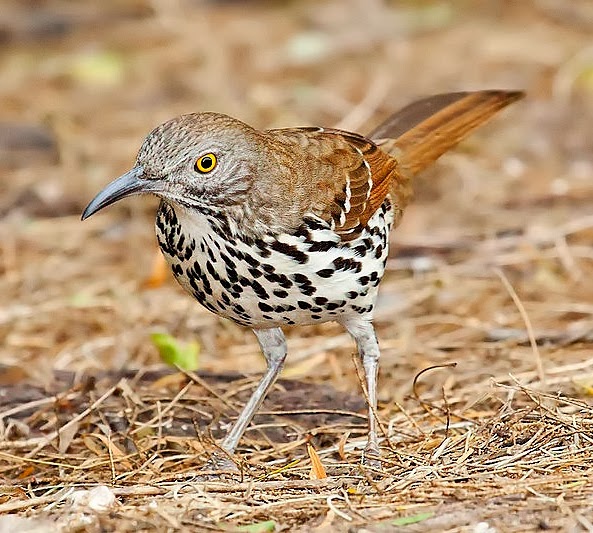Toxostoma longirostre
 |
| Photo by Bill Bouton (Wikipedia) |
Common name:
long-billed thrasher (en); sabiá-de-bico-longo (pt); moqueur à long bec (fr); cuitlacoche de pico largo (es); langschnabel-spottdrossel (de)
Taxonomy:
Order Passeriformes
Family Mimidae
Range:
This North American species is only found in southern Texas and northeast Mexico, between Tamaulipas and Veracruz.
Size:
These slender birds are 26,5-29 cm long and have a wingspan of 33 cm. They weigh on average 68 g.
Habitat:
They occur in a variety of scrubby of thicketed habitats, namely along riparian woodland and mesquite.
Diet:
The long-billed thrasher is an omnivorous bird, eating mostly grasshoppers, beetles, spiders, snails, slugs and various kinds of berries.
Breeding:
They build a bulky cup-shaped nest in thick low or mid-height vegetation. The nest is mostly made of twigs and grasses. The females lay 2-5 bluish-white eggs with dense reddish-brown and gray speckles. The eggs are incubated for 13-14 days by both parents. The chicks are fed by both parents and fledge after 12-14 days. Long-billed thrashers may produce two broods per year.
Conservation:
IUCN status - LC (Least Concern)
With a current population estimated at 400.000 individuals, this species has undergone a large and significant increase over the last 40 years. Consequently, the species is not threatened at present.
No comments:
Post a Comment